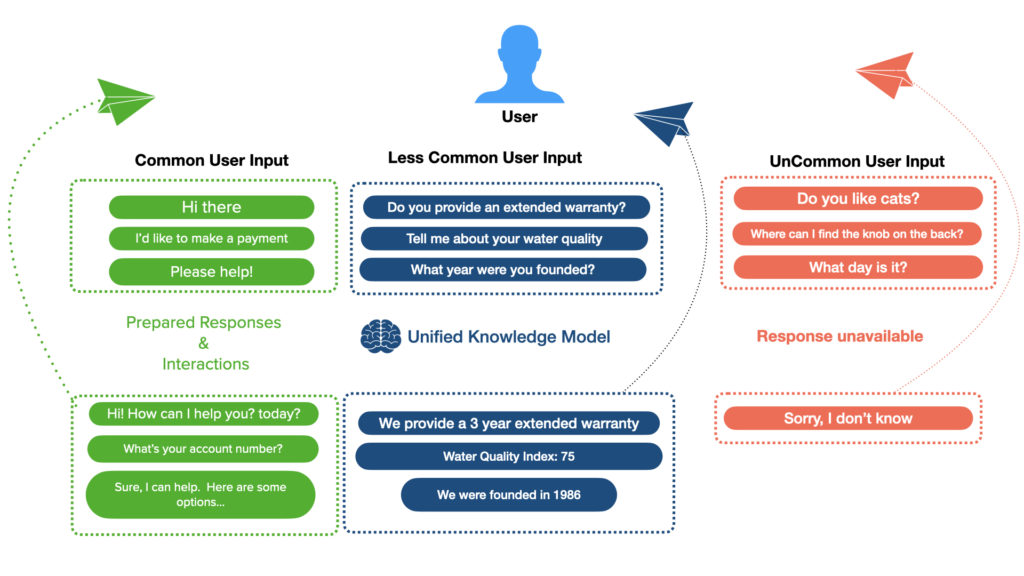
Digital-first users are comfortable with technology, and use it to help them shop, do research, and ‘get things done‘. They have a different mindset compared to traditional users who prefer to interact directly with a person, in a physical location. The Digital-first mindset is shared by a large population around the world, and is growing rapidly.
You may be a small business looking to provide more convenient ways to serve prospects and customers, or a large municipality with strained resources to meet the expectations of your citizens. In those cases, it may seem impossible to offer digital experiences like chat, intelligent search, AI-powered suggestions, and voice. In part 1 of our 3 part series, we’ll debunk the myths, and offer a roadmap to the digital-first highway.
Change the way you think about website navigation

We’ve all experienced this, you goto a website with the intention of finding some information. You click through the links, you type in the search bar, you try their poor excuse for a chat bot, but you’re having zero success!
Does this sound like your website? You may feel hamstrung to fix this, and don’t know where to begin. First, change how you think about the problem. Consider that your website has been online for a decade or two. You’ve created great content, but it’s lost in a sea of previous posts, announcements, and landing pages. Digital-first users won’t have the patience to sift through endless links only to hit a dead-end.
What you can do to improve discovery on your website
Your website is likely the best source of content for public information. Create a digital source of truth by indexing the content ahead of time, and let users interact with natural language. Sounds difficult right?
It’s not really, and can be achieved quickly with minimal expense. The technologies, and core concepts behind AI have matured and advanced simultaniously. Big Tech, and small start ups are bringing market offerings to solve these challenges for small businesses, and organizations with strained resources. Dr Andrew Ng (a leader in the AI field) has a famous speech where is says ‘AI is the New Electricity‘. His main point is that all organizations will be transformed similar to the phenomenon that took place 100 years ago.
Automated Responses 24/7/365

Once you rethink how the knowledge on your website (and other sources) is leveraged and automated…you’re well on your way to providing an on-demand, intelligent digital experience that’s always available. This ahem ‘transformation’ happens quickly when you handle the 80% of user requests you have content for. How do you automate?
First, define the popular things you want to have a prepared response for ahead of time. Things like ‘Welcome’, ‘Help’, and ‘Agent’ intents are a common way to classify groupings of phrases users might frequently ask of your organization. These user intents may match up to perhaps 20 different groupings.
Next, connect an intelligent search index that will query on behalf of the user. This search functionality works behind the scenes to provide the best (highest probability) response when no prepared responses are available.
When you setup your digital experiences this way, you’re quickly getting reasonably accurate responses to user inputs within a short period of time. This architecture reduces the ‘Sorry I don’t understand’, or “I’m still learning” that users are frustrated by.
In the next article, we will share ways to automate workflows for sales, and leads that come into your digital properties.

